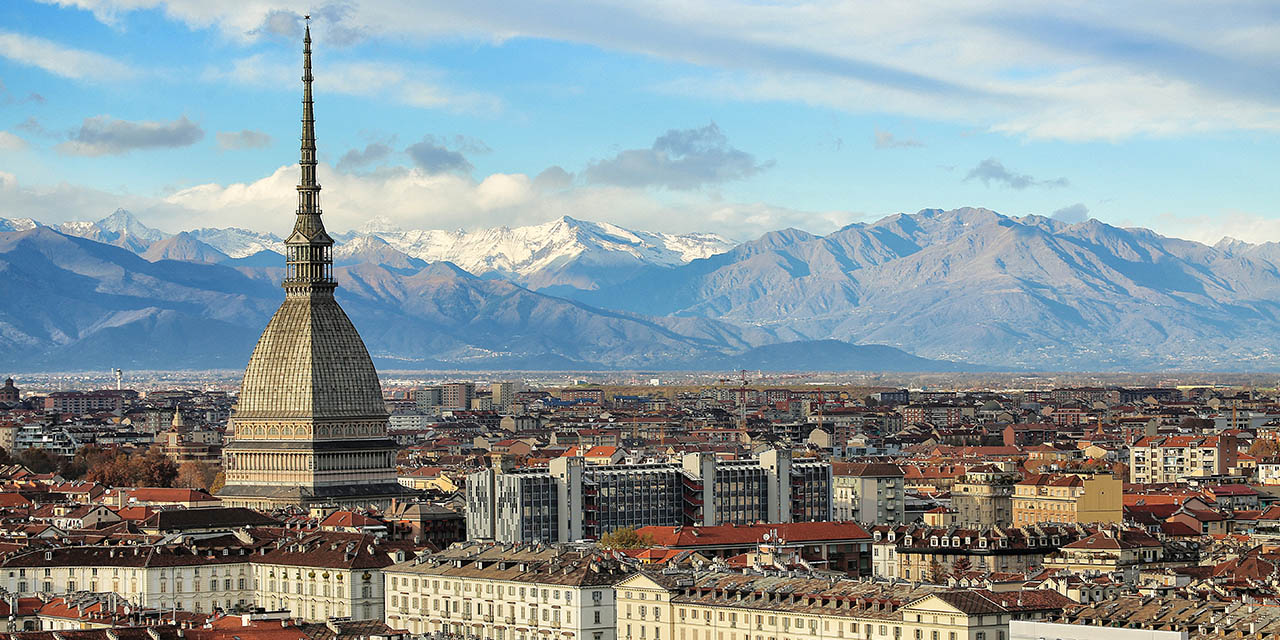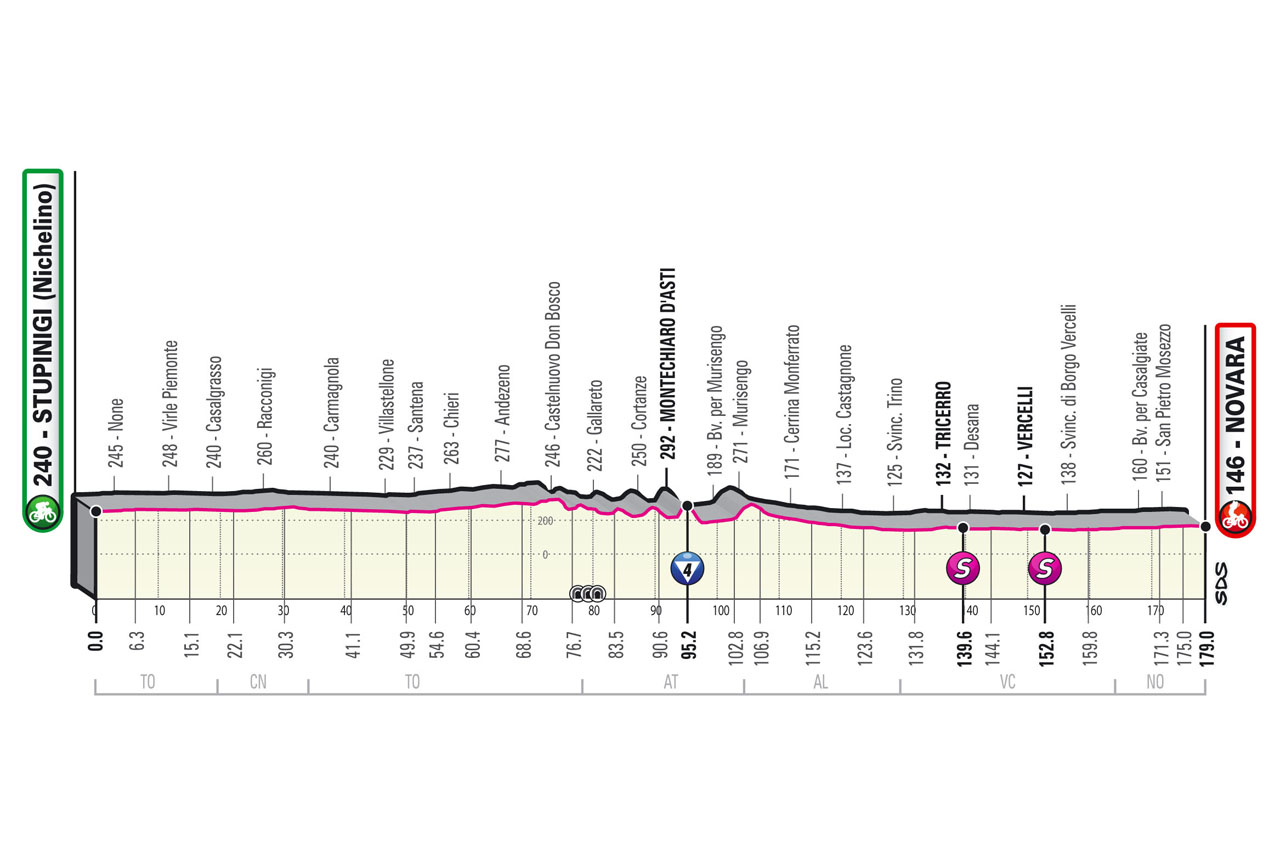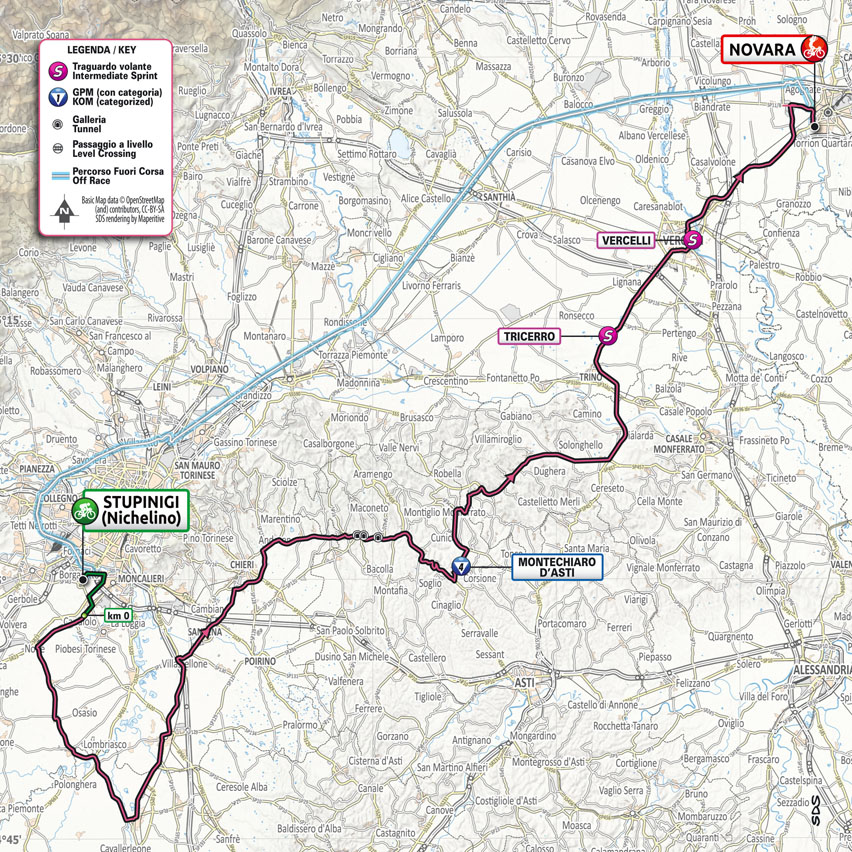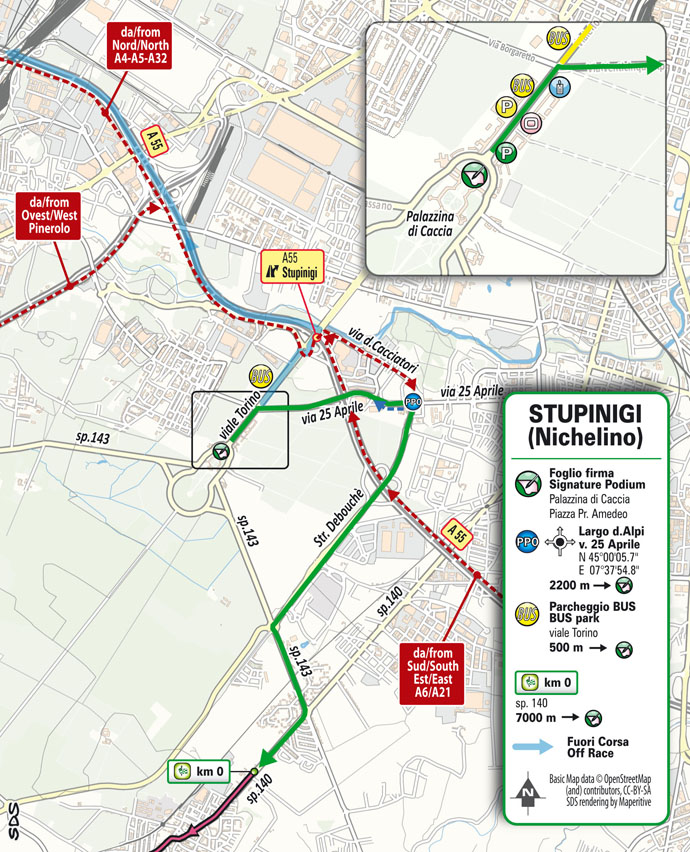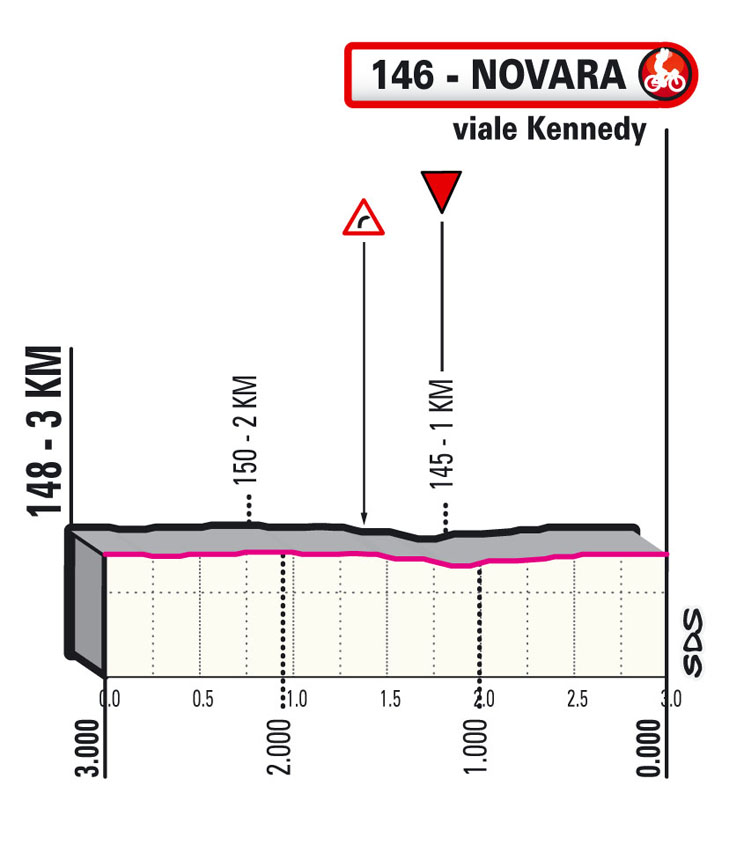profile
map
technical info
The stage is flat, with just a few undulations in the central section. The route runs along the roads of the hinterland of Turin, reaches the Asti area and takes in a few short ascents (KOM points are awarded at Montechiaro d’Asti). In the second section, the stage follows flat, wide and straight roads until the finish.
Final kilometres
The final kilometres are completely flat, with a few roundabouts and one last right-hander approx. 1,500 m before the finish. In the closing kilometre, the road is wide, undulating a little as the route crosses an underpass, and narrowing briefly with 700 m to go, owing to a roundabout. The finish line sits on tarmac.
start / finish
final kilometres
itinerary timetable
tourist info
Host city:
Stupinigi (Nichelino)
Overview
Nichelino is a city with a population of 50,752 located in the Metropolitan Area of Turin. It was born as a medieval stronghold on June 22, 1694 with the award of “Regia Patente” granted by the King Vittorio Amedeo II to the Counts Occelli.
The territory explodes with the economic boom under the push of the massive immigration attracted by the FIAT group. The population goes from 7,257 in the’50s up to the 50,000 in the ’70s. The stigma of “working-class bedroom” has its roots in this period and the city will be forced to deal with this black mark until the end of the century, despite the necessary services were provided in order to transform the old town into a modern city. On 17 January 2000, thanks to the Decree Law of the President of the Republic Ciampi, Nichelino received the title of City.
Today Nichelino boasts many cultural, sport and social initiatives thanks to the presence of the theatre “Superga”, the youth centre “Open Factory”, the library “G.Arpino”, many sports club and a lively associationism.
Gastronomy
Within the Stupinigi Natural Park, were identified the most suitable agricultural land for growing traditional varieties of wheat with a low gluten content, which had not been grown in the area for a long time, and to these have been added many varieties of ancient grains. The wheat, sown in the park, is stone-ground and his flour is sold in the area and also used by the Panacea bakery (in Turin) to produce bread by using sourdough. With the enhancement of local agriculture and the park’s antique agricultural vocation, a direct link has been created between the cultivated land of Stupinigi and the consumer, bringing to the table a top quality bread and creating the first flour chain in Piedmont. Working in a short supply chain without intermediaries ensures the elimination of chemical additives and offers consumers a productwhose quality and origin are fully known.
The Stupinigi flour chain is promoted by the Association“Stupinigi è…” through the initiative called “Filiera in Fiera”, which every year during the feast day in Nichelino, makes the presentation of products from the Stupinigi flour chain, workshops on bread-making techniques, distribution of the Panacea bakery’s sourdough, etc.
Also within the Park is located the Barale/Bertola farm, specialized in the production of high quality milk, used to make ice cream, yoghurt, cakes, etc. Also this artisanal production can boast of being 0 km, respecting the environment and focusing on the quality of the product.
In the Stupinigi Natural Park there is also the Michele Piovano beef farm, dedicated to raising Piedmont beef cattle. Thanks to the direct link from the farmer to the consumer, the high quality of its specialities is guaranteed: hamburgers, meatballs, the “agnolotti”pasta, etc.
Drinks
“El cichetin del Niclin” is the Nichelino basil liqueur, created by Ms. Claudia Sacco with products from Ponzio farm in Nichelino, which is specialised in basil production.
Novara
Overview
Novara is a city rich in traditions, history and artistic masterpieces, created little by little, in a sequence of stratifications and influences which have made it a lively cultural centre, an ideal stop for a visit throughout the entire year. Its true soul emerges in the historic centre, which revolves around the Basilica of San Gaudenzio and that daring structure that dominates everything, and that everyone looks at: Alessandro Antonelli’s Dome; its 121 meters design the skyline of the province’s capital city, giving it that beloved and familiar shape in which the people of Novara recognize themselves, so much so that it has become the symbol of the city itself. From up there the view is lost beyond the town’s borders, in the rice fields reaching its suburbs to the Alps, that you can almost touch it during the days of clear skies.
Speciality food
As Novara is surrounded by rice fields, its typical dish can only be made with rice: the paniscia is a risotto with beans, cabbage and salame della duja (a typical salami kept in a clay pot under the porc fat) and all the vegetables you can find in your garden . Each family has its own recipe, the important is to cook it in large quantity, so you can eat the rest the day after al salto, crispy and tasty.
Gorgonzola never fails on our tables, both dolce and piccante; the Consortium for the Protection of Gorgonzola cheese is in Novara, where most of the production is concentrated. One can taste it alone or combined with other ingredients in delicious recipes: anyway, it’s one of the cheeses that best match the whole meal. Dulcis in fundo, the Biscotti of Novara are an ancient dessert, whose recipe dates back to the XVIth century, made by the nuns that used to prepare them during Easter time and send to the Pope. Made only with flour, sugar and eggs they have accompanied the snacks of the Novara people for over 500 years. During the patron saint celebrations (22nd January) the Bread of San Gaudenzio is worth tasting; it’s a cake made with raisins or chestnuts, closed in a shortcrust pastry shell and dried fruit grains above.
Drinks
Not everyone knows that one of the most famous aperitifs in the world was created in Novara! In the mid XIXth century Gaspare Campari buys the Caffè dell’Amicizia, a café in town centre, where he works on his bitter recipe, that is still unchanged nowadays.
Not far from Novara the landscape changes: from the flat paddy fields we pass to the gentle hills and from rice to wine. Here, rows of grapevines, have been planted, processed and then their grapes transformed into wine, since Roman times, with increasingly satisfying and successful results. The first Social Winery in Italy was born in the province of Novara, in an area where viticulture has always been particularly favoured by microclimate, due to the closeness of Monte Rosa, and by mineral soils of morainic and volcanic origins. Here Nebbiolo, the king of Piedmont vines, is the master. Vinified alone or in a blend of native grapes, gives the important Doc and Docg of the territory: Ghemme Docg, Boca Doc, Fara Doc, Sizzano Doc and the Colline Novaresi Doc collection.
Main sights
Novara is a town of ancient foundation with a charming centre dating back to the XIXth century, golden age of its urban and economic development; the tourist’s gaze is immediately captured by the Dome of San Gaudenzio Basilica, projected and built during the XIXth century by Alessandro Antonelli, the architect of the Mole in Turin. Under the statue of the Savior, one can admire the Basilica, consecrated to the Patron Saint, a treasure chest of baroque art, as also the Church of San Marco; the imposing Cathedral of Santa Maria, by Antonelli as well, with its typical colonnade and the early Christian Baptistery, the most ancient building in town; the monumental Complex of Broletto, where once the public and civil life took place, today hosts the Modern Art Gallery Giannoni; the Castello Visconteo-Sforzesco, returned to the city after an impressive restoration, is nowadays the new culture and museum centre of Novara: one can visit here ExpoRisorgimento a collection dedicated to the historical events of the XIXth century, and some temporary exhibitions that enliven the cultural life all year long. Very important the two Theatres Coccia and Faraggiana, the music and artistic heart of the town.











